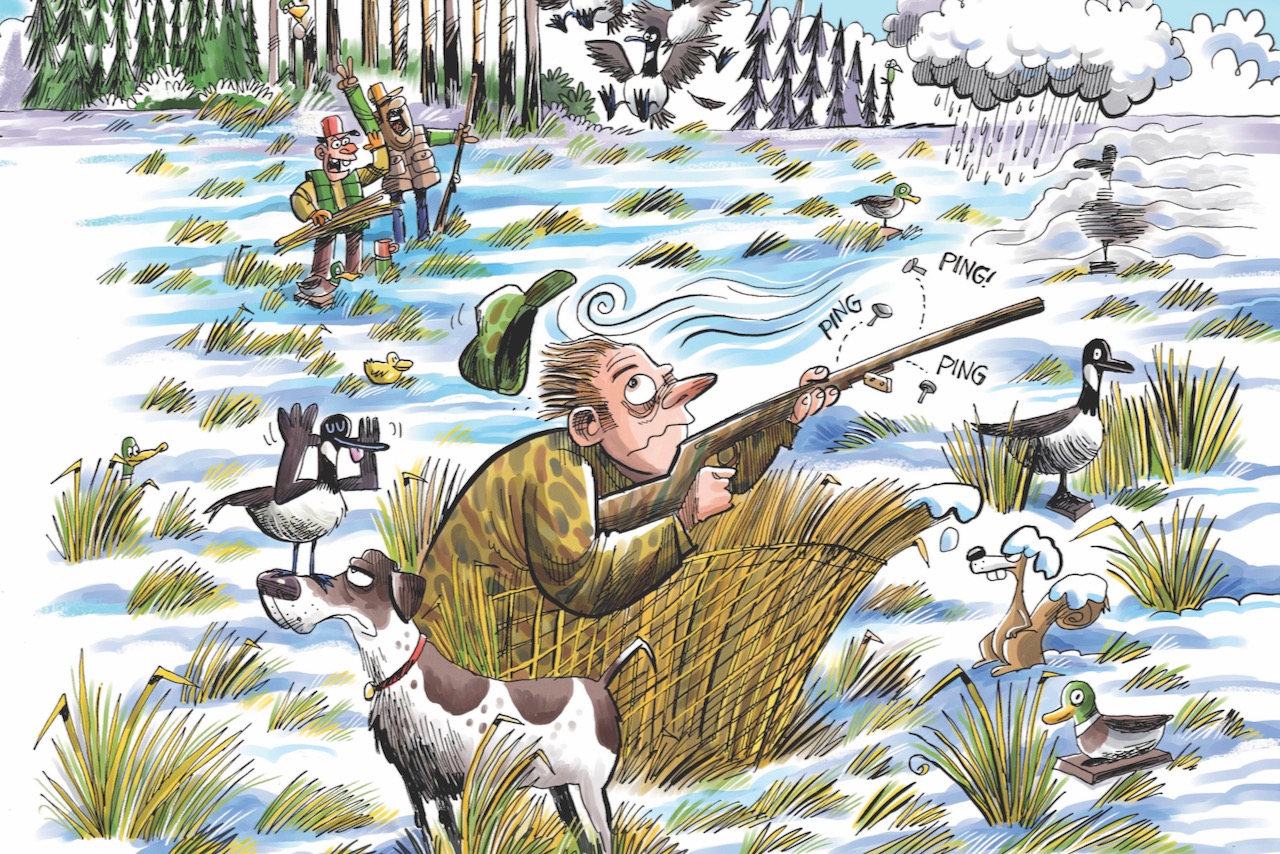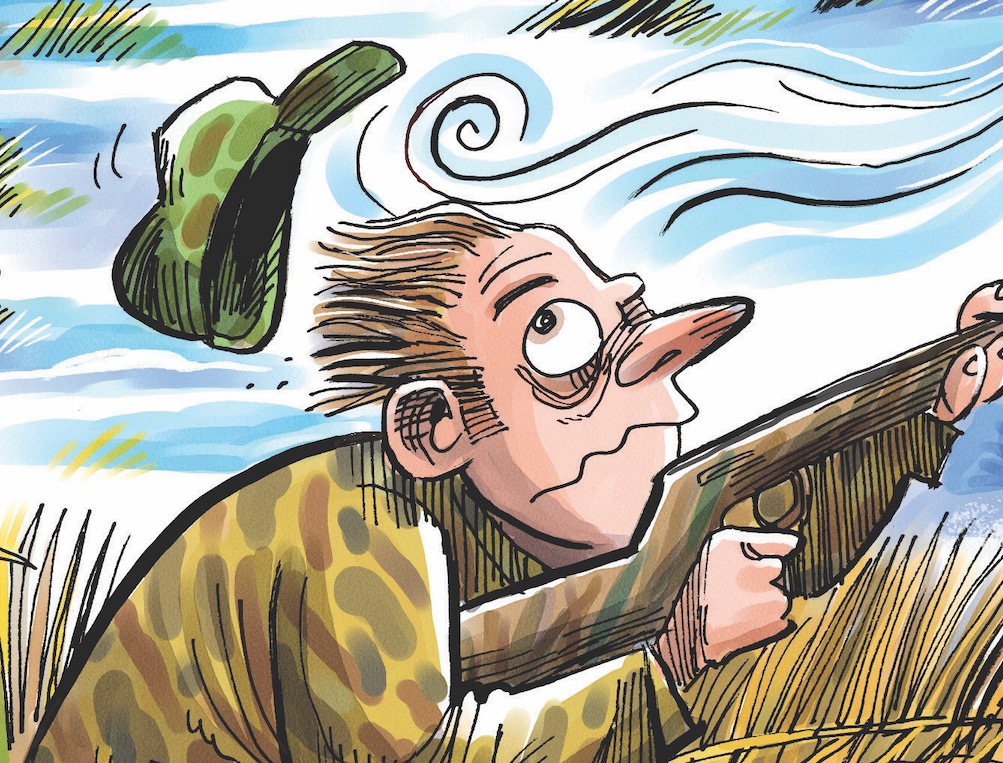WATERFOWLER WOES
Eight ways your duck or goose hunt can go sideways, and how to fix it when it does
Advertisement
#3 THE WIND SWITCHES DIRECTION
Setting up your blind and decoys is all about the prevailing wind direction; as we all know, ducks and geese generally approach from downwind. Set up incorrectly, and the birds will slide off to the side, land short or not commit at all. Unfortunately, the wind direction can change quickly, and when it does, you must react accordingly.
Advertisement
THE FIX
In those rare instances when the wind switches a full 180 degrees, leave your blind where it is and move some or all of your decoys to the back side. Then just reverse the direction you’re facing in the blind. Alternatively, you can leave your decoys where they are, turn in the blind, and shoot birds as they pass overhead. Eliminating movement is critical, as the birds will have to fly directly over your blind before landing.
More often, winds veer less than 90 degrees, typically shifting counter-clockwise during the afternoon. Astute hunters often set up anticipating this shift, but if you haven’t, move the wings in a standard J- or U-shaped spread to accommodate the change, and pivot your blind accordingly. The opening in your spread should face the direction from which you expect the birds to arrive. Avoid having birds, especially Canada geese, fly directly over your decoys—that can be a recipe for disaster. You want to ensure they can get into the hole without crossing one of your wings.


